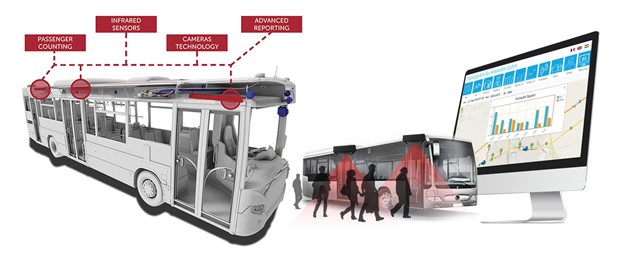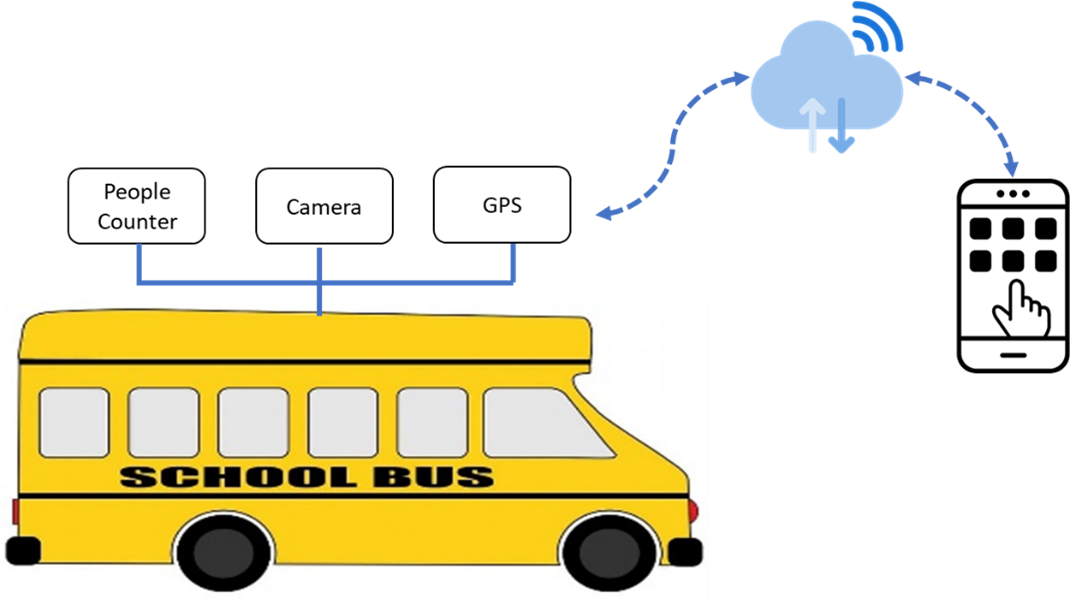Abstract:
The safety of students during transportation on school buses is a paramount concern for both parents and schools. Although GPS (Global Positioning System) tracking systems are commonly used, they are limited in their ability to identify which students are on board. To ensure the safety and security of the students, we propose a student authentication system based on facial recognition. This paper will explore the advantages of facial recognition technology for student authentication, the implementation process, and how it can improve the safety of school bus transportation.
Introduction
School transportation plays a crucial role in ensuring that students arrive at school safely and on time. Common challenges include the lack of adequate infrastructure, insufficient number of buses, and the need for improved safety measures. Another concern is the safety of students during transportation. While school buses are the safest form of transportation for students, there is always a risk of accidents and incidents. This is particularly true for students who must cross busy roads or highways to board or exit the bus.
To address these challenges, some school districts have implemented initiatives such as bus tracking systems, video surveillance, and driver training programs. However, there is still a need for further innovation and investment to ensure that school transportation is safe, efficient, and accessible for all students. These challenges highlight the need for innovative solutions, such as the implementation of facial recognition technology, to improve the safety and efficiency of school transportation.
Proposed Solution:
The proposed solution for improving school transportation safety involves the implementation of a student authentication system based on facial recognition technology. This system would use cameras installed on school buses to capture images of students as they board and exit the bus, which would then be compared to a database of authorized students. In addition to improving security by preventing unauthorized access, the system would also provide real-time information on the location of each student and their status on the bus. This would help to ensure that all students are accounted for during transportation and reduce the risk of incidents such as students being left behind or dropped off at the wrong location.

System Architecture:

Overall, the system architecture for a student authentication system using facial recognition technology is a combination of cameras, facial recognition algorithms, people counters, and GPS systems. By integrating these components, the system can provide real-time information about the location of the school bus and the identities of the students on board, enhancing the safety and security of school bus transportation.
How It Works?
When a student enters or exits the bus, the cameras with face recognition software will capture his/her image and match it with the database of registered students. If there is a match, the system will record the time and send an alert to parents and schools that the child has boarded or alighted from the bus. The attendance management system counts the number of students at a particular point of time and cross verifies with the database. GPS system provides the real time location of bus. The system also provides the estimated time of arrival at the pickup and drop-off points. This information can be shared with parents and schools for better tracking and management of the school bus transportation system.
Benefits
The proposed system of integrating a people counter and face recognition system with the existing GPS system provides several benefits. Firstly, it enhances the safety and security of the school bus transportation system by providing real-time information about the bus’s location and the students on board. This information can be shared with parents and school authorities, allowing for better tracking and management of the school bus transportation system. Secondly, the system can optimize the bus routes and schedules, resulting in cost savings and improved service. Lastly, the system provides peace of mind to parents, knowing that their child is safe and secure during their commute to and from school.
Artificial Intelligence: Future research could explore the use of artificial intelligence in the proposed solution. This could involve the use of machine learning algorithms to improve the accuracy and speed of the face recognition system and the people counters, thereby enhancing the overall performance of the system.
Conclusion and Future work
In conclusion, the capabilities of individual systems such as people counter, face recognition and GPS tracking can be clubbed together to have a safer and advanced school bus transportation system. The system can also optimize bus routes, provide real-time tracking, and generate alerts to parents and school authorities, thus improving the overall efficiency of the school transportation system. One potential area that requires further research is privacy and security. As the system involves the capture and processing of students’ personal information, it is important to ensure that the privacy and security of this information are protected. Further research can be conducted to develop more advanced encryption and security measures to ensure the protection of the data. Another area of research is the use of AI (Artificial Intelligence) for faster and better facial recognition.
Overall, the proposed solution has the potential to revolutionize the way school bus transportation systems are managed, providing parents and school authorities with a more comprehensive solution to student safety.
